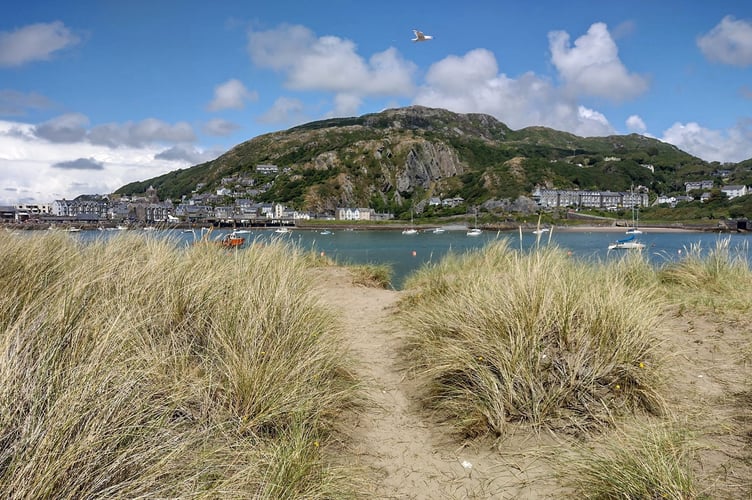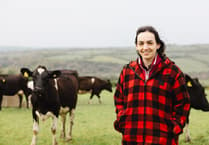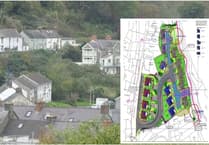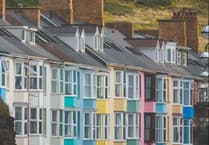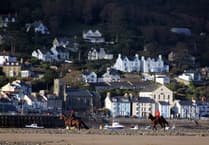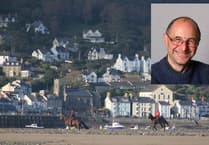Census data has revealed the depth of a housing crisis in mid and north Wales being exacerbated by second and holiday homes, with numbers growing amid concerns that local residents and young people continue to be priced out of buying a house.
Analysis of Census data collected in 2021 by the Office for National Statistics (ONS), shows that the number of people using a second address as a holiday home in Gwynedd and Ceredigion has jumped significantly in the last 10 years.
While in 2011 63.9 out of 1,000 residents were holiday home owners in Gwynedd, for 2021 that number jumped to 79 – the highest rise in the UK.
In Ceredigion the number rose from 29.9 in 2011 to 39.4 in 2021.
of every 1,000 residents in Gwynedd list themselves as second-home owners
The ONS report said that “as a proportion of the local housing supply South Hams on the coast of Devon and Gwynedd in North Wales had the highest proportions of holiday homes”, with some areas of Gwynedd having “more than one in 10 addresses being used as holiday homes”.
“And when adjusting for the local population, Gwynedd and the Isle of Anglesey in North Wales saw the highest proportions of holiday home users travelling to their areas,” the ONS added.
The ONS also said due to the way data is collected, the figure for holiday and second homes is “likely to be higher”.
of every 1,000 residents in Ceredigion list themselves as second-home owners
Overall, ONS found that Wales was the area with the highest proportion of people using a second address as a holiday home, relative to the local population.
A total of 36,370 people were using holiday homes in Wales, equivalent to 11.7 holiday home users for every 1,000 local residents, with Gwynedd having the highest concentration.
More than three-quarters of people who used holiday homes in Gwynedd came from England’s North West (43.3 per cent) or West Midlands (32.1 per cent).
The most common area people travelled from to holiday homes in Gwynedd was Cheshire, with 6.4 per 1,000 local residents coming from Cheshire East and 4.8 per 1,000 from Cheshire West and Chester.
“
Tourism is vital to our economy but having too many holiday properties and second homes, which are empty for much of the year, does not make for healthy local communities and prices people out of the local housing market.
First Minister Mark Drakeford
The usual resident population of Gwynedd has fallen by 3.7 per cent between the 2011 Census and Census 2021, as the number of holiday home users has risen.
The Welsh Government has already introduced a range of measures to address the issue of second homes, including giving councils the discretionary power to increase council tax premiums on second and empty homes and it has changed the rules on holiday lets so owners and operators make a “fair contribution to their local communities”.
The new rules mean properties must be rented out for at least 182 days a year, and available for at least 252 days in a bid to stop second home owners circumventing council tax rules by registering for business rates to avoid the tax premium imposed by councils.
The Welsh Government is also introducing changes to national planning policy to give local authorities the ability to control the number of second homes and holiday lets in any community.
Introducing tougher planning laws last year, First Minister Mark Drakeford said: “Tourism is vital to our economy but having too many holiday properties and second homes, which are empty for much of the year, does not make for healthy local communities and prices people out of the local housing market.
“There is no single, simple solution to these issues. Any action we take must be fair. We do not want to create any unintended consequences, which could destabilise the wider housing market or make it harder for people to rent or buy.”
In Gwynedd, councillors want to be able to control the amount of second homes by introducing new rules.
Owners currently have the right to change the use of a residential dwelling to a second home or holiday let without needing planning permission.
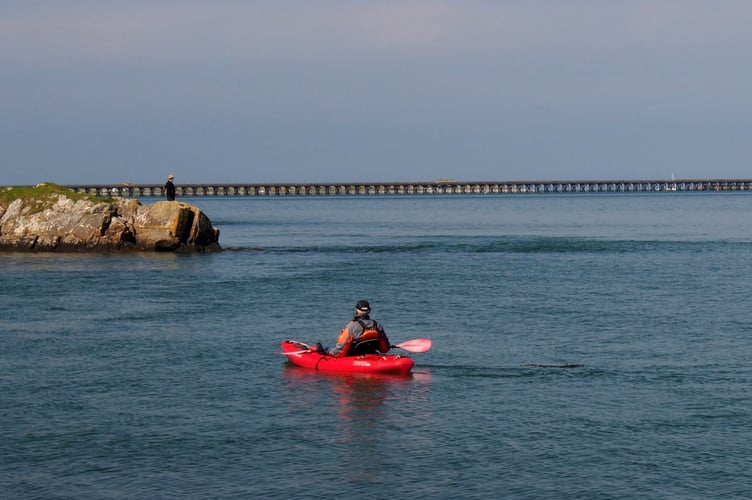
The council wants changes made to its planning rules making it necessary to submit a planning application.
The number of holiday lets had increased from 1,193 in July 2018 to 2,719 in July 2022, council figures say, and Cllr Dafydd Meurig Cabinet member for environment, said the council had long exerted “extreme pressure” on the Welsh Government to tackle the increase in holiday homes across the county due to the impact it was having on communities.
Records from the Welsh Government from January last year show there were 5,098 properties registered as second homes for council tax purposes in Gwynedd.
of properties in New Quay were listed as second homes in 2021
With the Welsh Government saying that councils can now raise council tax on second homes to up to 300 per cent, campaigners have called on Ceredigion County Council – which has second homes hotspots along the coats including New Quay and Borth – to use its powers to curb the problem.
Cymdeithas yr Iaith said the council “needs to make full use of these new powers”.
The Welsh language campaign group said “We are facing a housing crisis – and increasing the higher council tax to the highest possible level, placing a cap on the percentage of second homes in any community, and requiring planning permission to convert a house into a holiday home are measures that Ceredigion needs to implement as soon as they can.”
ONS figures show there were approximately 695 holiday homes in Ceredigion when the census was taken in March 2021.
properties in Gwynedd are listed as second homes, the Welsh Government says
In the county, Welsh Government data shows 895 properties registered as second homes for council tax purposes.
Latest Ceredigion figures suggest the highest percentage of holiday homes was in New Quay, at 26 per cent or 206 properties.
The next highest was Penbryn at 12 per cent or 138 properties, and then Borth with 11 per cent or 122 properties.
Generation Rent, a campaign group aimed at protecting renters’ rights, said the high concentration of holiday homes is “taking properties out of the reach of people who need somewhere to live”.
The Welsh Government said: “We believe that everybody has a right to a decent, affordable home to buy or to rent in their own communities so they can live and work locally.
people in the 2021 Census listed having second homes in Wales
“We are taking radical action using the planning, property and taxation systems to achieve this, as part of a joined-up package of solutions.”
While Ceredigion and Gwynedd suffer from increasing amounts of second homes owned by people outside the area, the ONS figures show that fewer people in the two counties had a second address as a holiday home in 2021 than in 2011.
The figures – from the 2021 census – show there were 224 people from Ceredigion staying at holiday homes – down from 371 in 2011.
And there were 403 people from Gwynedd staying at holiday homes – down from 658.
The decline in Gwynedd’s real residents between the 2011 and 2021 Census
Wales was the most common destination for a second home for people from West Midlands and North West England, with 20,045 people from these areas travelled to Wales, accounting for more than half of the 36,370 people who used holiday homes in Wales.
While 26,940 people from England used second addresses in Wales as holiday homes, just under 2,000 Welsh people have a holiday home in England.
The ONS data says: “Census 2021 data on second addresses only includes people who usually reside in England and Wales who said they spend at least 30 days a year at the address.”
“Some second addresses may not be used by any usual residents in England and Wales for at least 30 days a year, and these would not be captured in this data,” ONS said.
“The total number of second addresses used as holiday homes, and people who use them, are likely to be higher.”
Overall, around 70,000 second addresses were used as holiday homes, visited by more than 200,000 people in England and Wales.
Holiday homes accounted for 4.1 per cent of all second addresses in England and Wales and were mainly concentrated in coastal areas, Areas of Outstanding Natural Beauty or national parks.
The ONS said the Covid-19 pandemic “may have been an impact” on the latest Census data, but said its effect was “difficult to measure.”
